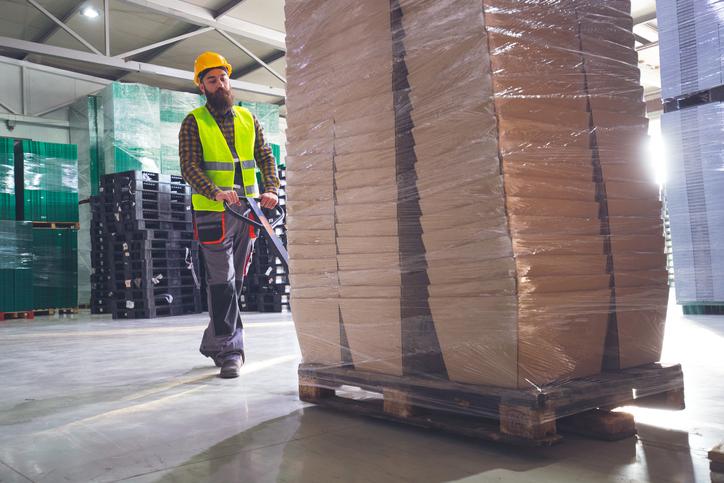Each year, millions of pounds of plastic waste end up in our oceans, causing environmental harm and disrupting ecosystems. This post-consumer waste is a growing concern globally.
As a leading custom converter and printer of stretch films, Stretchtape recognizes the urgent need for sustainable practices in the plastics industry. In this blog, we delve into the world of Post-Consumer Recycled (PCR) materials, exploring why businesses should reduce their plastic waste impact, how PCR differs from post-industrial recycled materials, and methods for how stretch film can be made from post-consumer waste (a product also referred to as recycled hand film).
Why should companies embrace PCR?
In a recent McKinsey survey, 55% of US respondents expressed concern about the environmental impact of product packaging. Companies are receiving a clear message from their customers: Prioritization of ethical sourcing of post-consumer recycled plastic is good not only for the environment but also for business. Such practices enhance brand reputation while meeting the growing demand for sustainable products.
PCR versus PIR: What’s the difference?
While both Post-Consumer Recycling and Post-Industrial Recycling (PIR) contribute to sustainability, they differ in their sources. PCR relies on materials used and discarded by consumers, while PIR utilizes waste generated in manufacturing. Both are important, but for companies such as Stretchtape, which already have highly efficient manufacturing processes, the greatest benefits can be found in addressing the waste left over after the stretch film has been used to transport or store goods.
Which industries are already implementing PCR?
From packaging to textiles, PCR materials are already found in a broad range of products and industries. Fashion, food, and beverage companies also utilize a high percentage of recycled materials in their products.
This work is being supported by governing bodies. For instance, the European Union mandates a percentage of recycled materials that should be included in all products. Through consumer pressure and government backing, industries should expect higher demand for post-consumer recycled materials, with the market growing significantly to reach $22.37 billion by 2028 (up from $15.42 billion in 2021).
How can recycled hand film benefit companies?
PCR resin is used to create post-consumer recycled hand film. The process uses plastic that has already been recycled and is ready to be repurposed again. We source 25% PCR recycled hand film made from materials such as plastic bottles, which are separated from other materials, washed, and cleaned before reprocessing them into PCR, ready for use. The resulting product has no significant differences in function or performance from other hand films, which allows us to participate in the circular economy while continuing to produce high-quality stretch film.
How else can we reduce plastic waste in stretch film?
Beyond incorporating recycled materials, Stretchtape uses other methods to reduce plastic usage, such as:
- Choosing the proper stretch film prevents goods from being damaged and creating more waste.
- Using lighter gauge film, when possible, naturally reduces plastic waste.
- Ensuring proper tension of the stretch film to secure goods in place and prevent tearing.
- Pre-stretched film increases the film’s surface area and reduces the amount needed to secure loads.
- Optimizing wrapping techniques to prevent waste and secure the load.
- Investing in automation to reduce human error.
- Using pallet bands such as sanstrap® to secure loads.
We have gone far more in-depth on how companies can reduce their stretch film usage here.
Contact Stretchtape for your sustainable stretch film needs
Adopting PCR materials is an increasingly important step for any stretch film manufacturer. Stretchtape is focused on using post-consumer recycled hand film to positively impact plastic waste while using existing strategies to reduce stretch film usage overall. As consumers increasingly prioritize sustainability, companies that adopt these practices now will only benefit in the future.
If you’re a company looking to invest in stretch film or need advice on reducing your stretch film usage, get in touch! Our experts are ready to advise you and provide the best solution for your needs.

